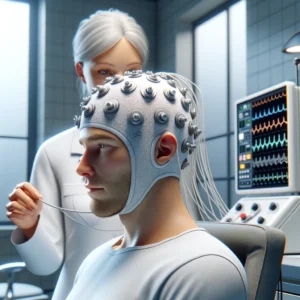Age
Age significantly affects the risk of TBI, with the probability and nature of injuries varying across life stages. Infants and toddlers often suffer TBIs from falls and child abuse, which are common in this age group. Adolescents and young adults face a higher risk due to riskier behaviors and higher involvement in sports and motor vehicle accidents. Conversely, the elderly are more prone to TBIs from falls, and these injuries are generally more severe in this group due to pre-existing medical conditions and decreased physiological resilience.
Gender
Gender differences in TBI statistics are clear: males typically experience a higher incidence of TBI than females in nearly every age group. This difference stems from behavioral and occupational variations, with males more frequently engaging in high-risk activities such as contact sports, military combat, and certain physical labor. However, studies indicate that females may suffer more severe symptoms and longer recovery times when they do experience a TBI, underscoring the need for gender-specific research and treatment approaches.
Socioeconomic Status
Socioeconomic status (SES) also influences TBI risks, as individuals from lower socioeconomic backgrounds often face greater exposure to TBI risk factors. These include engaging in manual labor, living in high-crime areas, and limited access to safety equipment and safe housing. Additionally, lower SES generally correlates with reduced healthcare access, affecting treatment and rehabilitation outcomes for TBI patients. The lack of resources and support systems can hinder recovery and worsen the long-term consequences of brain injuries.
Race and Ethnicity
Variations in TBI incidence and outcomes also correlate with race and ethnicity. Racial and ethnic minorities often encounter disparities in healthcare access, leading to differences in TBI diagnosis, treatment, and rehabilitation. Cultural factors and genetic predispositions may also influence injury risks and recovery processes. For example, specific genetic markers that vary among races could affect the biological response to brain injuries and influence recovery trajectories.
Demographics and Traumatic Brain Injury Conclusion
Demographic factors significantly shape the probability of experiencing a TBI and the subsequent outcomes. Understanding the impact of age, gender, socioeconomic status, and race/ethnicity can help tailor prevention strategies, improve treatment protocols, and provide more personalized rehabilitation programs. Addressing these demographic disparities is crucial for reducing the overall burden of TBIs and enhancing the care and support available to affected individuals. Integrating demographic considerations into public health policies, clinical practice, and research can lead to more effective TBI management and better outcomes for diverse populations.






